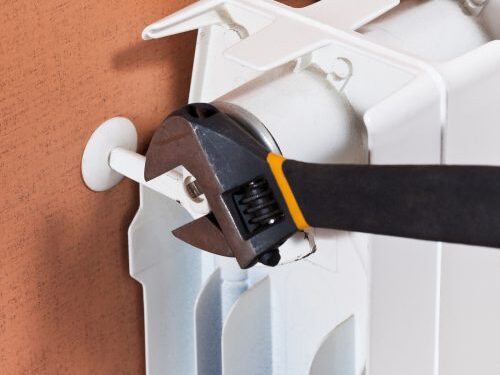A central heating inhibitor is a chemical liquid that is used to protect and maintain the efficiency of your central heating system in order to extend its lifespan. When you pour central heating inhibitor into your pipes, it enters the heating system and mixes with the water. This prevents the formation of sludge and allows your boiler, radiators, and storage tank to resume normal operation.
Why is central heating inhibitor important?
Central heating inhibitor is important because it stops internal corrosion and scale within your heating system and helps to keep your system going for longer. It is important to protect your heating system against debris and sludge build-up and adding inhibitor helps to do this.
It’s important inhibitor is topped up every time the system has been drained and refilled with water. This means you may need to top up inhibitor more than once a year.

Why is adding inhibitor important?
Protects against corrosion and scale
In central heating systems that have dissimilar metals like aluminium, copper, and brass for example, there is a high risk of corrosion in different parts of the boiler.
To prevent boiler breakdown
Due to blockage and damage to components, the inhibitor, added to a clean system limescale and sludge build-up which prevents boiler breakdowns.
It helps the system run efficiently
Because the system is running smoothly without debris and sludge, it helps the rest of the system, like radiators get hotter quicker.
Is cost effective to help prevent breakdowns
A typical one litre bottle can treat a full house system up to 15 radiators. If the system isn’t drained down for the rest of the year, inhibitor is a very cost effective preventative measure.
Prevents cold spots in radiators
There are no cold spots in the radiators after adding inhibitor so the room warms up more quickly.
Boiler maintenance costs are reduced
There is less chance of component breakdowns so maintenance costs due to replacing parts are reduced. An efficient heating system also saves on energy bills.
What is central heating inhibitor made of?
An inhibitor is made up of chemicals such as benzotriazole, sodium molybdate and sodium nitrate. It is added to the central heating system to prevent rust and corrosion of the metals within radiators and pipework from damaging the boiler. It works by coating the inside so the water doesn’t oxidise the metals.
How does a central heating system get corroded?
Water in the system reacts with metals in it, like steel in the radiators; aluminium, brass and copper in the boiler and pipework. If the system water has a higher or lower pH value than the ideal (between 6.5 and 8.5), it will corrode the metals causing rust and limescale which damage the radiators and the boiler, causing leaks and failure.
Can inhibitor be used on all central heating systems?
Inhibitor can be used on both pressurised systems such as with combi boilers and also unpressurised heating systems like the feed and expansion tanks. The method of application would be different but will help both types.
How to apply inhibitor to the central heating system?
Disclosure: Some of the links below are Amazon affiliate links. This means that, at no cost to you, we will earn an affiliate commission if you click through the link and complete a purchase.
Generally, if you have an open vented heating system, drain some water out of the tank, usually in the loft, and add the inhibitor to the feed and expansion tank. With a sealed system, you can add it through a radiator using a suitable filling kit. Always follow the manufacturer’s instructions when adding inhibitor.
How often should inhibitor be changed?
Central heating inhibitor level should be checked at least once a year, preferably during a service and topped up if required. It will also need to be added again if you have drained the system down for some reason (like removing a radiator) and then replenished the water as the inhibitor will be lost.

How to test how much inhibitor is in a system
Testing the level of inhibitor is done by taking a sample of water from the central heating system (not water from the hot tap) and adding it to a solution provided in a testing kit. Checking the colour concentration will determine if the level is satisfactory or more inhibitor needs to be added.
Manufacturers generally have testing kits only for their products and it is best to use the same testing kit for the inhibitor used. But if you don’t know what inhibitor was used, you can use a universal test kit.
Is inhibitor mandatory?
Currently, adding inhibitor and checking of its level in a central heating system is highly recommended but it is very likely to become mandatory soon especially as modern boilers are more compact with smaller components, and warranties (some up to 12 years) won’t be valid without a satisfactory inhibitor level in the system.
Best central heating inhibitor products
Check out the following most popular products used in the industry. All available from Amazon:
CosWarm CW1 Central Heating Inhibitor and Protector
Summary
It’s important to add inhibitor to your central heating system for the following reasons:
- Protects against corrosion and scale.
- To prevent boiler breakdown.
- It helps the system run efficiently.
- Is cost effective to help prevent breakdowns.
- Prevents cold spots in radiators.
- Boiler maintenance costs are reduced.
*The information in this article should be used for general guidance only. Always discuss your requirements with a competent and suitably qualified professional before undertaking any work.
